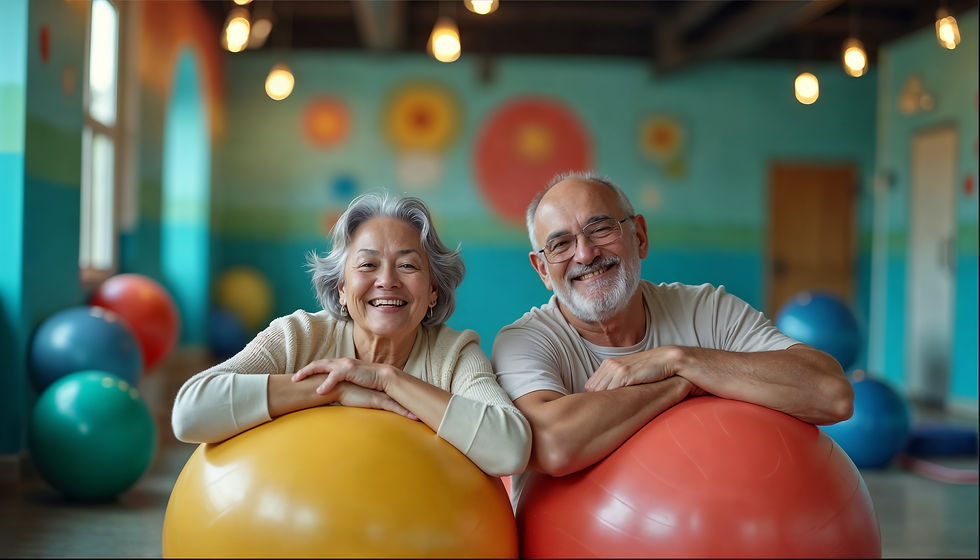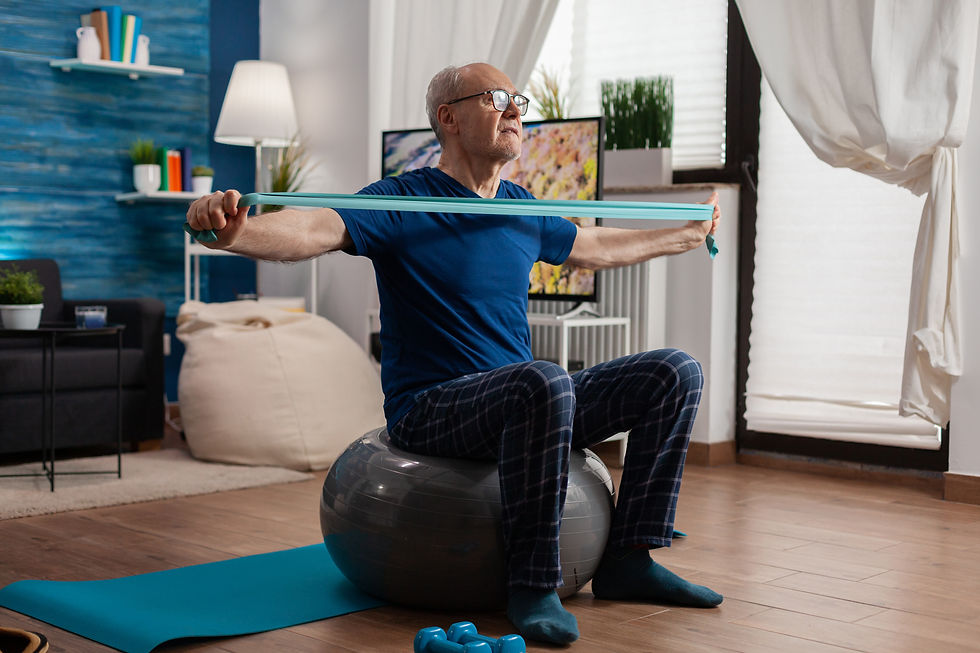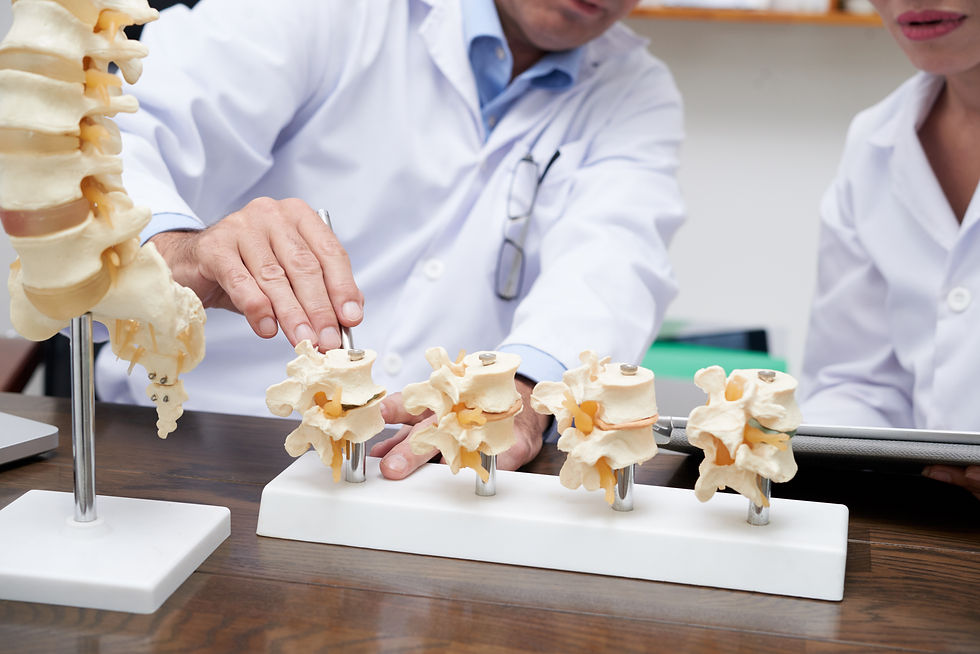Key Points About Starting Exercise as an Older Adult
- Jordan Pollard

- Mar 18
- 3 min read

Did you know that after the age of 50, people lose muscle mass at a rate of about 1-2% per year? Or that strength training can reduce fall risk by up to 40%? If you're over 50 and thinking about starting exercise for the first time, you might wonder: Is it too late? Will I get injured? Can I really make a difference in my health at this stage? The short answer is—absolutely, yes! You can build strength, improve balance, and increase energy levels at any age. The key is to start where you are and focus on consistency. By making movement a priority, you can live younger for longer.
Why 50+ is a Crucial Time to Start Exercising
Many people notice changes in their energy, mobility, and overall health as they enter their 50s and 60s. After 50, we naturally begin to lose muscle mass, and our bones and joints may start to feel stiffer. At 65+, changes in strength and balance become even more pronounced, increasing the risk of falls and injuries. However, research shows that regular strength training can:
Improve bone density and reduce osteoporosis risk.
Enhance joint health and reduce pain from arthritis.
Boost cognitive function and mental well-being.
Common Concerns & How to Overcome Them
“I’m afraid of getting injured.”
Starting slow and choosing the right type of exercise is key. Focus on controlled movements, low-impact activities, and proper form to reduce injury risk. Strength training, walking, and gentle balance exercises are excellent places to start.
“I’ve never exercised before. Where do I begin?”
If you’re completely new to exercise, the first step is simply moving more. Begin with daily walks, light bodyweight exercises, and activities you enjoy. From there, progress gradually by adding strength training and mobility work.
“I feel too stiff and out of shape.”
This is exactly why you should start! Movement improves flexibility and joint function. Exercises like yoga, Pilates, and basic stretching can help you feel looser and more mobile over time.
“I have existing health conditions.”
If you have arthritis, heart disease, or other conditions, exercise can be incredibly beneficial. However, it’s best to consult with a professional—like an exercise physiologist—who can guide you through a safe and effective routine tailored to your needs.
Key Exercise Tips for Older Adults
Strength training is one of the most important types of exercise for older adults. It builds muscle, increases bone density, and improves mobility. Simple exercises like bodyweight squats, resistance band exercises, and light dumbbell movements can be effective starting points.
Balance and stability exercises are also essential, as they help prevent falls, which become more common with age. Try incorporating:
Standing on one leg while holding onto a stable surface.
Heel-to-toe walking to improve coordination.
Tai Chi or other slow, controlled movements to enhance stability.
Low-impact cardio is another key component of a well-rounded exercise routine. Walking, swimming, or cycling can improve heart health without excessive strain on the joints. Pairing this with mobility and flexibility work, such as daily stretching or beginner-friendly yoga, helps maintain joint health and range of motion.
Building an exercise habit starts with small steps. Even five minutes a day can make a difference. Keeping track of progress, whether through a journal or an app, can be a great motivator to stay consistent and celebrate improvements.
Take Action Today
A great way to begin is with a short exercise routine:
Try this quick 5-minute routine:
10 bodyweight squats
10 seated knee extensions (each side)
10 heel raises
10 seconds balancing on one leg (each side)
Bodyweight squats to strengthen legs and core.
Seated knee extensions to support knee function.
Heel raises to improve lower leg strength and balance.
Standing balance exercises to enhance stability.
Finding a supportive environment, such as a fitness class, a trainer, or an exercise partner, can help keep you accountable. If you're unsure where to start, consulting an exercise physiologist ensures that your program is safe and tailored to your needs.
It’s never too late to start exercising, and the benefits are profound—better strength, improved balance, greater independence, and an overall enhanced quality of life. Whether you're 50, 60, or beyond, your body is capable of adapting and getting stronger. Share this blog with a loved one and take the first step together! Start today, stay consistent, and live younger for longer!



Comments